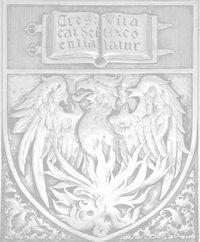
Standards of printing generally declined in the centuries following the Gutenberg, as the task of producing books fell from a scholarly profession to a craft and then a trade. By the mid-nineteenth century steam power had hastened the slide, as had stereographic reprints, acidic wood-pulp papers, and "the great spread of education" which in Alfred Pollard's view, "caused a demand for very cheap books." These pressures led to a debate among fine printers over the role of typography and book design in contemporary editions of ancient texts. Modern fine printing developed as a counter movement to the growing commercial mass press. But this craft and its practitioners were faced with an aesthetic dilemma. Should the typographer and his craft present themselves to the reader in ornate printing technique, or should they demonstrate their skill through the restrain of appearing to be "invisible"? Biblical texts offer an ideal arena in which to follow this central debate among modern fine printers. No other works have inspired such distinctive and recognizable stage settings on the page, nor such humility and restraint. The choices evident in the Berkowitz collection-a recent gift to the University Library-speak of the coherent development of modern fine printing which has occurred in the nearly one hundred years since its birth.